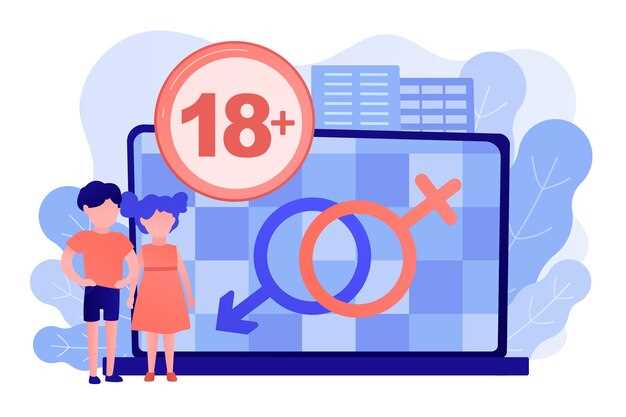Recommendation: Aim for 7–9 hours of quality sleep, request baseline testosterone or estrogen tests if interest drops, and schedule a formal review of all medication そして prescription drugs every 6–12 months. Some drugs lower interest; combining PDE5 agents such as viagra and nitrates is unsafe, so disclose all medicines to clinicians; being transparent reduces risk. Take the following steps: list current drugs, track libido patterns, and ask what reversible causes exist.
Population surveys report wide variation: roughly 20–50% of respondents across cohorts report reduced sexual interest in later decades, depending on comorbidities and partner status; decline rates differ by gender and chronic disease group. Endocrine shifts, vascular disease, sleep disorders and polypharmacy explain much of the variance, while psychological problems such as depression contribute substantially. Rely on audited guidelines and measurable lab results rather than sources that can be inaccurate.
Practical management measures include maintaining weekly aerobic and resistance exercise, reducing alcohol, treating obstructive sleep apnea, and reviewing antidepressant choices when they cause problems. Create a staged care plan: conservative measures first, then targeted therapies; consider specialty procedures only after conservative steps fail. Evidence has limiteds for some interventions, so use shared decision making and documented goals; many lifestyle changes become effective within 3–6 months.
For ongoing care, maintain blood pressure, glycemic control and tobacco cessation to support vascular and hormonal health. Ask your clinician what tests to order and which specialists to consult; establish a point of contact in the primary care system for monitoring. Prioritize safe sourcing for medicines, confirm any prescription authenticity, and document outcomes to refine management and reduce long-term problems.
Typical sex drive changes by decade
If libido falls suddenly or causes persistent distress, arrange a medical review within 4 weeks; severe dysfunction requires referral to endocrinology or urology and baseline labs including testosterone, thyroid, and fasting glucose.
20s – Peak libido for many: 75–90% report weekly intimate activities in survey cohorts; contraception use and new partnerships influence frequency. Smoking, heavy alcohol, high-stress work schedules and unprotected casual encounters increase STI risk and can reduce interest. If difficulty sustaining arousal appears, review medication lists (antidepressants, antihypertensives) and sleep patterns.
30s – Small decline common, often related to pregnancy, postpartum changes and higher childcare load. Sedentary routines and weight gain (bigger BMI) correlate with lower libido in multiple cohort samples. Recommend 150 minutes/week of moderate activity, pelvic floor exercises, and talk therapy for those who feel anxious about intimacy. Partner communication exercises twice weekly can restore frequency for many couples.
40s – Hormonal shifts accelerate: men may show a ~1% per year testosterone fall after 30 that becomes clinically relevant in the 40s; ovarian transition reduces estrogen in those assigned female at birth. A journal published report from a Massachusetts center observed increased reports of vaginal dryness and erectile difficulty in this decade. Treatable contributors include treatable sleep apnea, medication adjustments, and topical estrogen or lubricants.
50s – Menopause/andropause effects are common: decreased spontaneous desire, more reliance on contextual cues for arousal. For persistent low libido, check labs and consider short-term hormone therapy when contraindications are absent and contraception is not required. Behavioral recommendations: scheduled intimate time, lubricant for penetration, and safe communication about preferences and pain.
60s+ – Frequency often falls but satisfaction can remain stable; chronic illness, polypharmacy and mobility limits reduce opportunities. Sedentary lifestyle and cumulative vascular disease increase sexual dysfunction risk; smoking history worsens outcomes. Cardiac evaluations may be necessary before resuming vigorous activity. Condom use remains recommended for new partners or non-monogamous dating.
Clinical actions: review current medication lists (many common drugs reduce libido), screen for depression and anxiety, advise smoking cessation and weight loss, prioritize physical activities that improve cardiovascular fitness, and protect sexual health with regular STI screening when dating. If conservative measures fail, patients were often referred for specialist testing; prostate, pelvic and endocrine evaluations can identify reversible causes. Customer-reported outcome tools and validated questionnaires streamline follow-up. For evidence summaries, see the article and journal reviews published lately; some regional datasets, including work from Massachusetts centers, support these patterns.
20s: balancing high libido with lifestyle and contraceptive choices
Prioritize method-matching: if a hormonal contraceptive corresponds to a sustained ≥15% drop in desire across 8–12 weeks, switch to a non-hormonal option (copper IUD, condoms) or a different hormone profile to prevent ongoing bother and improve overall satisfaction.
Evaluate biological drivers: testosterone and estrogen peaks in the early 20s often produce higher baseline libido in this population, so relative declines feel larger than absolute changes. Researchers report mixed signals–some trials show 5–20% of users note decreased desire on combined oral contraceptives, while others find neutral effects. Assess activation of the HPA axis (stress response) and ask what recent events caused abrupt shifts; stress-driven cortisol activation can suppress gonadal function and affect desire more than contraceptive hormones in some cases.
Monitor objectively: use daily symptom logs, track sleep (hours/night), exercise load (heavy endurance training >10 hrs/week linked to lower reproductive function), and mood. Order targeted labs only if functional impairment persists beyond three months: TSH, prolactin, and a free testosterone or SHBG panel are applicable for identifying endocrine causes. Consider emotional health screening–early trauma, ongoing depression, or chronic pain often have larger effects than contraceptive type and should be treated concurrently.
Clinical communication and options: when youve met clinicians, share exact contraceptive history, side-effect requests, dates and details of onset. Ask for a trial off hormonal methods for 2–3 cycles or a switch to a different progestin; this should clarify causation. Avoid relying solely on marketing claims about new formulations. For people assigned male partners, sildenafil is indicated for erectile function but is not a reliable intervention for decreased desire in others and is rarely applicable. Use shared decision-making, early follow-up at 6–8 weeks, and small measurable goals (sleep ≥7 hours, reduce heavy training if applicable) to improve outcomes.
30s: parenthood, sleep loss and shifting priorities
Prioritize consolidated sleep: aim for 7–9 hours nightly; use naps, shared night duties and strict sleep hygiene to reduce cortisol and preserve testosterone that supports sexual interest.
Create a simple nightly plan: foto-based logs or a short photo timeline for feeds help partners trade duties fairly; youre more likely to get enough uninterrupted rest when responsibilities are clear, which makes recovery faster and boosts libido.
Increase routine physical activity: 150 minutes weekly of moderate aerobic activity plus two resistance sessions raises muscle mass, can increase baseline testosterone, improves mood and can improve erectile function and vaginal lubrication at higher levels of fitness.
Address mental health early: depression and anxiety blunt desire and erection quality; screen during pediatric or primary care visits, discuss medication risks and benefits, then refer to behavioral providers for CBT or couples therapy when underlying mood disorder is identified.
Communicate scheduling of intimacy: block short dates, targeted touch sessions, or 20–30 minute windows rather than waiting for a marathon night; youre more likely to reach satisfying encounters when partner expectations align and pressure is lower.
When concern persists, seek evidence-based evaluation: researchers and clinicians recommend basic labs (testosterone, thyroid), review of current medications that reduce libido, and targeted pelvic or penile assessment for vaginal pain or erectile dysfunction; verified studies show treatment tailored to the underlying cause yields better outcomes.
| 問題 | Action | Expected result |
|---|---|---|
| Sleep fragmentation | Shared night plan; naps; blackout curtains | Higher energy; better mental focus |
| Low desire | Screen for depression; discuss interests; schedule intimacy | Improved mood; increased sexual activity |
| Erectile problems | Medical review; vascular risk check; specialist referral | Improved erection reliability |
| Vaginal discomfort | Pelvic exam; lubrication strategies; pelvic floor PT | Less pain; better arousal |
Practical checklist: track sleep hours and feeds for two weeks, create a shared calendar entry for a weekly date, discuss contraception goals during primary care visits, ensure youve had a mental health screen in past six months, ask providers about safe medication alternatives that do not suppress libido.
For local resources search Massachusetts General Hospital, primary care networks or telehealth providers; use secure portal code for appointments, subscribe to parenting sleep newsletters, then bring verified notes to specialist visits so their recommendations match your life demands.
Key research note: a recent study of new parents found sleep loss and postpartum depression are major predictors of lower sexual interest; researchers advise combined behavioral and medical approaches rather than single interventions.
Useful external resource (источник): https://www.mayoclinic.org/diseases-conditions/low-sex-drive/symptoms-causes/syc-20352739
40s: stress, career pressure and subtle hormonal shifts to monitor
Measure fasting morning total testosterone, SHBG, LH and prolactin between 07:00–10:00; if total testosterone is <300 ng/dL in men or below the female lab reference (typically 15–70 ng/dL), repeat once andor request calculated free testosterone – document results in a written summary to show your doctor.
If labs show low testosterone or a mild decline versus prior values, review medication lists: oral and injectable prescriptions relating to mood and pain (SSRIs, opioids, finasteride, spironolactone) and other agents can suppress levels; provide that list to the prescribing clinician and ask for an alternative or dose adjustment.
Assess metabolic and regulatory contributors: measure fasting glucose, HbA1c, lipid panel and TSH – metabolic syndrome and thyroid disease commonly coexist and reduce libido; include waist circumference and blood pressure in the details you bring to appointments.
Lifestyle interventions with quantified targets: resistance training 2–3×/week + 20–30 minutes HIIT 1–2×/week, protein 1.2–1.6 g/kg/day, sleep 7–9 hours with blue-light restriction 1 hour before bed (stop phone and stimulating activities), limit alcohol to <10–14 drinks/week; expect measurable testosterone gains in 8–12 weeks if adherence is high.
Mental-load mitigation: delegate or reduce evening work tasks, schedule a weekly “no-phone” 90-minute window for recovery, and use brief cognitive techniques (5-minute breathing twice daily) to lower sympathetic nervous system tone – nervous-system overactivation correlates with symptom persistence regardless of lab values.
Reproductive planning and fertility: if conception is desired, obtain semen analysis before starting testosterone therapy; exogenous testosterone causes reversible oligospermia and may require fertility-sparing strategies or referral to a fertility specialist.
When to escalate: refer to endocrinology if total testosterone <200 ngdl, symptoms persist>3 months despite lifestyle measures, or primary/secondary hypogonadism is suspected; document an informed consent clause and treatment goals in writing before starting replacement.
Regulatory and safety notes: follow local regulatory guidance for replacement therapy, screen baseline PSA and hematocrit, recheck levels at 6–12 weeks after initiation then every 6–12 months; if hematocrit rises >54% or PSA increases significantly, pause treatment and consult your doctor.
Practical monitoring plan: keep a symptom log (written or app), capture work and sleep hours, record medication changes and phone use; reassess labs at 3 and 12 months, and consider lifestyle-first management – about a third of people in their 40s report mild symptoms despite normal labs, although objective decline may be gradual since the late teens and early 20s.
50s and beyond: when to screen for medical contributors to low desire
Screen at the primary care or specialty visit when low desire is new, persistent for >3 months, or accompanied by: weight change, fatigue, sleep disturbance, erectile problems, vaginal dryness, or major mood change.
- Baseline labs to order at first consultation:
- TSH and free T4 – abnormal TSH <0.4 or >4.0 mIU/L prompts treatment; consider treatment or endocrine referral if symptomatic or TSH >10.
- Morning total testosterone – men: <300 ng/dL suggests hypogonadism; women: interpret with endocrine consult (values vary by assay).
- Prolactin – >25 ng/mL flag; >50 ng/mL or rising values: MRI pituitary indicated.
- HbA1c – >6.5% diagnostic for diabetes; 5.7–6.4% = prediabetes that can become symptomatic and affect desire.
- CBC – hemoglobin <12 g/dL (women) or <13 g/dL (men) indicates anemia as a reversible source.
- BMP (creatinine, electrolytes), LFTs – baseline for medication safety and to address hepatic/renal contributors.
- Vitamin D – <20 ng/mL deficiency common in midlife and linked to fatigue; replete per guidelines.
- Urine pregnancy test if pregnancy remains possible (any chance of baby).
- Medication and substance review:
- Identify agents known to reduce desire: SSRIs, SNRIs, certain antipsychotics, opioids, some beta‑blockers, and high‑dose alcohol. Make a list of each agent, start date, dose, and discuss alternatives.
- Bupropion is often used as an alternative antidepressant with lower rates of sexual side effects; consult psychiatry before changing treatment.
- Mental health screening and referrals:
- Use PHQ‑9; score ≥10 indicates moderate or worse depression – speak with patient and give prompt referral to mental health for therapy/medication review.
- Assess anxiety (GAD‑7) and recent stressful events; address emotional contributors during consultation.
- Sleep and cardiometabolic contributors:
- Screen for obstructive sleep apnea with STOP‑Bang; score ≥3 → arrange sleep study; untreated OSA can lower libido and testosterone.
- Measure BP and fasting lipids; uncontrolled cardiovascular disease or diabetes can reduce desire and should be treated per guidelines to prevent progression.
- When to image or refer:
- Endocrinology referral: abnormal sex hormones, persistent low testosterone in men (<300 ng/dL), or complex hormonal results in women.
- Neuroimaging (pituitary MRI): prolactin >50 ng/mL or neurological signs (visual field defects, headaches).
- Gynecology/urology: pelvic pain, dyspareunia, significant vaginal atrophy, or erectile dysfunction not explained by hormones.
- Mental health: PHQ‑9 ≥10 or suicidality, severe anxiety, or major relationship distress affecting desire.
- Timing, follow‑up and documentation:
- Repeat abnormal labs after 4–12 weeks or sooner if symptoms worsen; once results are available, give a written, verified summary with the date and next steps.
- Create a shared care plan: medication adjustments, behavioral strategies, and referral timelines; keep symptom logs for each patient to track response.
- Reassess after interventions at 8–12 weeks; if no improvement, escalate to specialist consultation.
- Practical patient actions to address contributors:
- Sleep hygiene, weight reduction (5–10% weight loss can improve metabolic contributors), alcohol reduction, and smoking cessation help prevent and reverse physiologic causes.
- Brief counseling to improve emotional understanding between partners; referral to sex/relationship therapy can be helpful alongside medical treatment.
- Provide reliable источниk/source materials that are written and verified; give dates for follow‑up tests and when to return for an urgent visit.
Maintain a perspective that multiple factors often coexist; speak frankly about depression, medications, and relationship stressors. For patients experiencing difficulty, even mild lab abnormalities deserve reconsideration of current medications or referral so symptoms do not become chronic.
Non-hormonal factors that lower male libido
Reduce heavy alcohol and tobacco use now: target ≤14 units/week or ≤2 standard drinks/day; stopping often reduces erectile dysfunction risk and improves desire within 8–12 weeks.
- Medication effects: selective serotonin reuptake inhibitors (SSRIs) reduce interest in ~30–70% of users; beta‑blockers and thiazide diuretics also lower libido. Review current medication orders and discuss alternatives (bupropion, different antihypertensive class) with the prescriber.
- Sleep and breathing disorders: obstructive sleep apnea and chronic short sleep lower testosterone and increase daytime fatigue that affects libido. Screen if partner reports loud snoring or apnoeas; CPAP often improves function.
- Chronic disease and neuropathy: diabetes, cardiovascular disease and multiple sclerosis damage blood flow and nerves to the penis. Diabetic neuropathy typically begins in foot or hand and signals possible genital involvement; tighter glycaemic control reduces progression.
- Lifestyle contributors: obesity, sedentary behaviour and poor diet decrease libido. Achieve 5–10% weight loss to improve erectile scores; aim for ≥150 minutes/week of moderate exercise and a Mediterranean-style diet. Heavy late-night meals and alcohol make sleep worse and reduce morning desire.
- Psychosocial and relational factors: anxiety, depressive episodes and partner issues often lower interest. Take account of partner factors – a female partner’s pain or avoidance commonly reduces male interest. Couple therapy or brief CBT can reverse avoidance patterns.
- Pornography and screen exposure: excessive computer use or online porn can desensitise response and alter expectations. Limit screen time before sleep, set daily caps, and replace solo viewing with partner interaction; keep a journal of usage to identify patterns.
- Pelvic trauma and procedures: pelvic fractures, prostate surgery or pelvic radiation can cause direct penile nerve or vascular injury leading to dysfunction; early referral to urology increases options (vacuum devices, PDE5 inhibitors, intracavernosal injection, counselling).
- Substance effects and endocrine interactions: opioids, heavy cannabis and anabolic steroids lower libido; anabolic steroids may cause prolonged suppression of free testosterone. Identify substances that trigger low interest and use harm‑reduction or substitution strategies.
- Acute stressors and daily variation: acute life stress, major deadlines or acute illness can trigger short-term drops in desire. Track exactly when dips occur to separate episodic variation from persistent problems.
Practical actions: keep a dated symptom journal; post daily entries that record exactly diet, alcohol units, sleep hours, medication name and dose, computer/porn time and a 0–10 libido rating. Bring the journal and current medication orders to the next clinic visit to discuss targeted interventions and rule out treatable bodily conditions. Include STI protection and testing in the plan to reduce anxiety that often makes avoidance worse.


 How Sex Drive Changes with Age – Causes, Stages & Tips">
How Sex Drive Changes with Age – Causes, Stages & Tips">


 Dating Guide – Cynical Tips for the First 6 Months">
Dating Guide – Cynical Tips for the First 6 Months">
 How Men and Women Think About Sex – Differences & Insights">
How Men and Women Think About Sex – Differences & Insights">
 How to Handle Your Husband’s Feelings for Another Woman">
How to Handle Your Husband’s Feelings for Another Woman">
 At What Age Do Men Stop Being Sexually Active? Causes & Signs">
At What Age Do Men Stop Being Sexually Active? Causes & Signs">
 10 Questions to Ask Your Significant Other Before the Next Step">
10 Questions to Ask Your Significant Other Before the Next Step">
 Why Unattractive People Don’t Realize It — Self-Perception Explained">
Why Unattractive People Don’t Realize It — Self-Perception Explained">
 From Swiping to Sexting – The Enduring Gender Divide in American Dating & Relationships">
From Swiping to Sexting – The Enduring Gender Divide in American Dating & Relationships">
 41 Questions That’ll Take Your Dates to the Next Level — Conversation Starters for Deeper Connection">
41 Questions That’ll Take Your Dates to the Next Level — Conversation Starters for Deeper Connection">
 How to Tell If Someone Loves You – 13 Clues You Should Know">
How to Tell If Someone Loves You – 13 Clues You Should Know">
 How to Date Confidently While Between Jobs — Practical Tips">
How to Date Confidently While Between Jobs — Practical Tips">